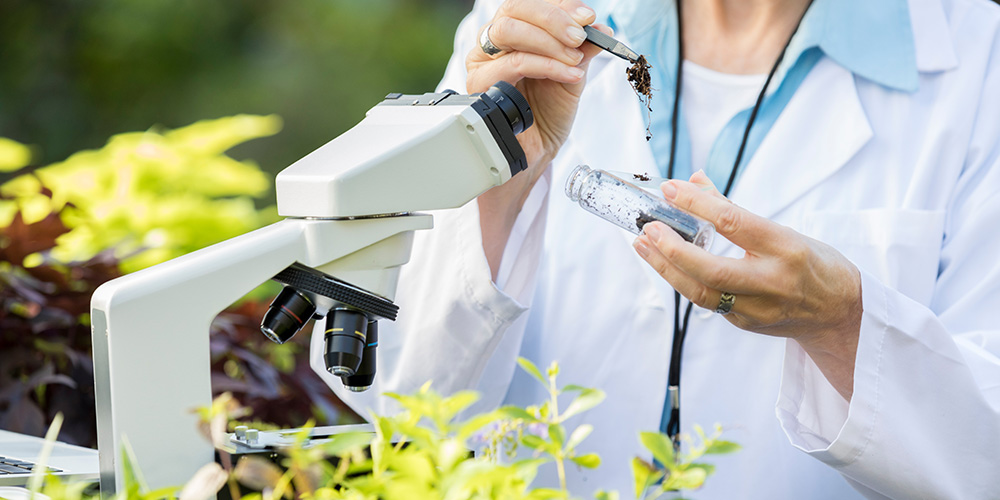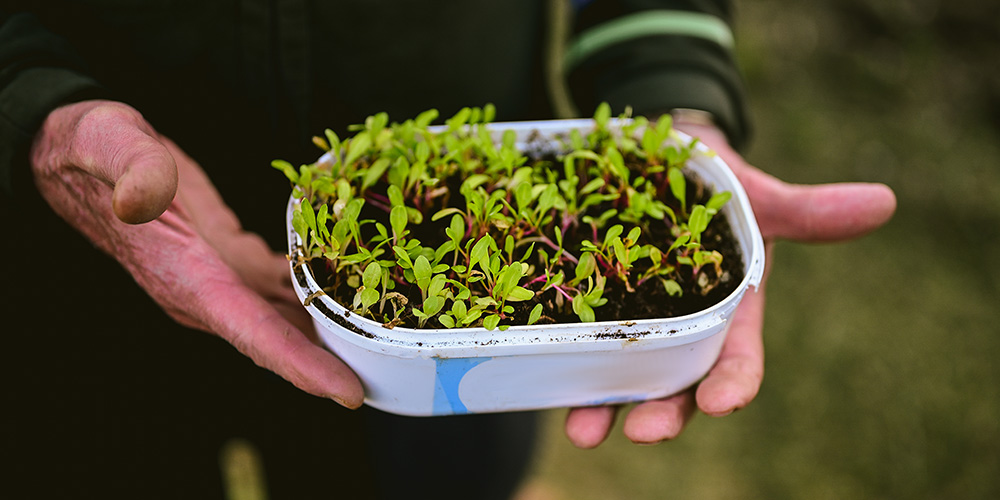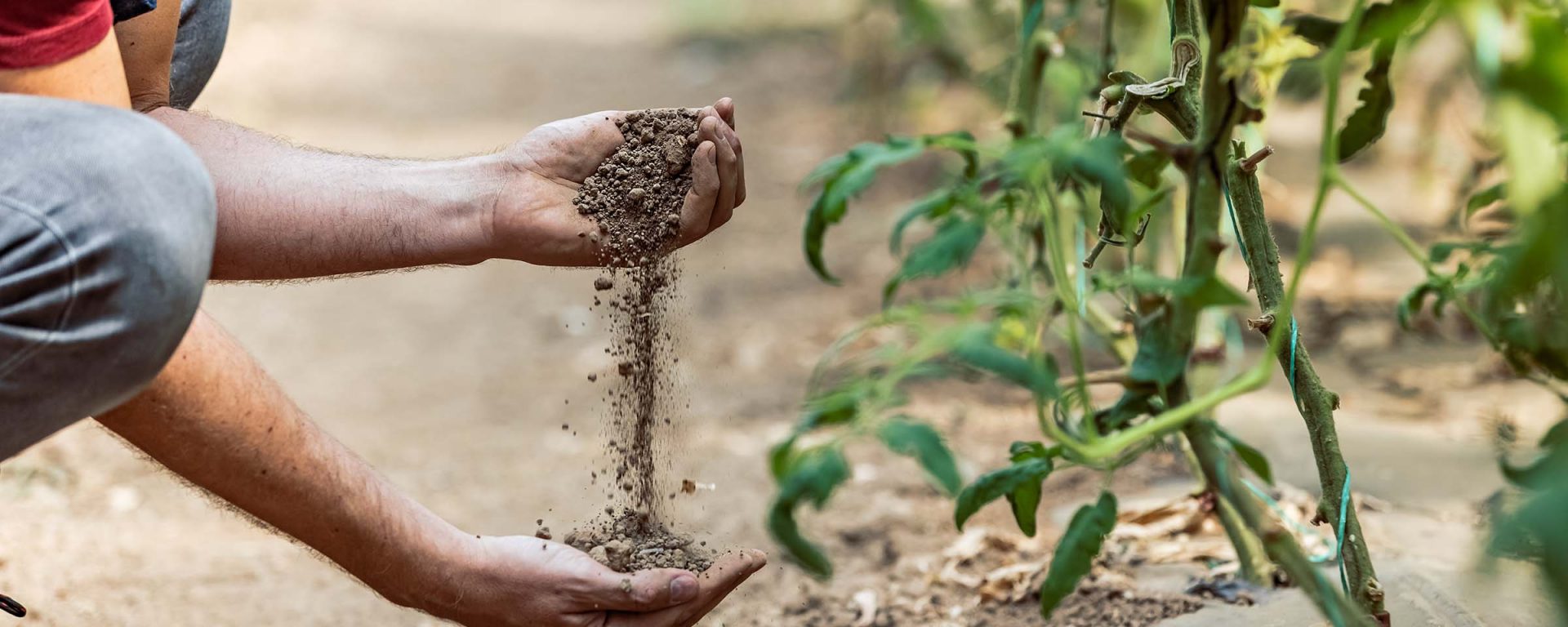Soil is just “dirt”, isn’t it? In fact, it’s so much more than that. Healthy soil is vital to us all.
Tim Flannery, environmentalist and author, knows this: “We must remember that the soil is the foundation of all life. Without healthy soil, we cannot sustain healthy crops, healthy animals, or healthy people.”
So, let’s take a look at soil health. What does healthy soil look like? Why is it of significant importance? And what can we do to improve the health of our soils?
What is healthy soil?
Healthy soil is a complex system that contains a diverse range of microorganisms, minerals, organic matter, and other nutrients. It supports plant growth and also contributes to the health of its surrounding ecosystem. That means the animals that depend on the plants, the animals that eat those creatures, and, via agricultural systems, ultimately us.
A healthy soil tends to have a few things:
- Good structure: A healthy soil has a crumbly texture with a good balance of air, water, and pore space. This allows water, nutrients, air, plant roots and microorganisms to move through it.
- Nutrient content: A healthy soil contains the right balance of nutrients essential for plant growth. These can include nitrogen, phosphorus, potassium, calcium, and magnesium.
- Organic matter: Decaying plant and animal material improves soil structure, water retention and nutrient cycling.
- Good soil pH: A pH range between 6.0 to 7.5 is ideal for plant growth.
- Active soil microbiology: A healthy soil contains a diverse range of microorganisms, including bacteria, fungi, protozoa and nematodes. All of which play important roles in nutrient cycling, soil structure and plant health.
- Low levels of soil compaction: A compacted soil can restrict root growth and reduce water infiltration.
- Low levels of soil erosion: A healthy soil is not easily eroded by wind or water, which can lead to loss of topsoil and nutrients.
- Good water-holding capacity: A healthy soil can hold water, preventing it from running off the surface or being lost through deep percolation.
Soil in monocultures
A healthy soil is one that is home to, and supports, a wide array of plants and animals. However in agricultural systems monocultures (where a single species dominates an ecosystem) are often planted. This reduces the number of organisms that can co-exist with it. Healthy soil has a complex ecosystem, so does most of the work of nurturing healthy plant growth. Conversely, in monocultures the farmer has to step in to help the plants survive – by doing things like adding chemical fertilisers, irrigating and ploughing.

Why is healthy soil so important?
Soil health is a critical component of our natural environment. Without healthy soil, we can’t grow the crops that provide us with food, and plants can’t produce oxygen or remove carbon dioxide from the atmosphere. As politician Penny Wong said: “Soil is the most important natural resource we have. It’s the foundation of our food and fibre production, and it’s critical for maintaining our ecosystems and biodiversity.”
Here are some of the crucial roles healthy soil plays in sustaining life on earth.
Maintaining agricultural productivity and sustainability
Agriculture accounts for around 2.5 per cent of Australia’s GDP. And provides employment for around the same percentage of the Australian workforce. We’re also one of the largest exporters of agricultural products in the world, with key exports including wheat, beef, dairy and wool. When soil health declines, crops become less productive, and farmers may need to use more fertilisers and pesticides to maintain yields. Soil health is therefore critical for maintaining the productivity, profitability and sustainability of our agricultural sector.
Conserving the environment
Soil health is of particular importance to environmental conservation in Australia. We have a unique and diverse ecosystem, with over 80 per cent of our flora and fauna being endemic. The health of our soil is essential for supporting the growth and survival of native vegetation, which provides habitat and food for wildlife. Healthy soil also reduces the risk of soil erosion, nutrient runoff and water pollution, which can have negative impacts on the environment and human health.
Enabling ecosystems to function
Soil provides habitats for a huge range of organisms, from tiny bacteria and fungi to earthworms and other larger animals. These organisms help to break down organic matter and recycle nutrients, maintaining the health and productivity of our ecosystems. When soil health declines, it can have a range of negative impacts on ecosystems. For example, soil erosion can lead to the loss of topsoil, which is rich in nutrients and organic matter. This can make it difficult for plants to grow, and as a result can lead to the loss of biodiversity as plant and animal species struggle to adapt to their changing environment.
Improving water quality
Healthy soil helps filter and store water, which can help to reduce the impacts of floods and droughts. Its structure allows more water retention, which makes it more available to plants and animals. It also means less water runs off the surface, as it does on more compacted soils. Healthy soil also helps to prevent the leaching of nutrients and pollutants into waterways. Which can lead to algal blooms and other water quality issues.
Combating climate change
The Australian Government’s 2021 State of the Environment report stated that Australia has had the third highest cumulative loss of soil organic carbon in the world over just 250 years, behind only behind China and the US. Healthy soil can capture and store large amounts of carbon from the atmosphere through a process called carbon sequestration. Plants absorb carbon dioxide during photosynthesis and store it in the soil through their roots.
Organic matter is a significant component of soil carbon. As plants and organic matter decompose, carbon is stored in the soil for long periods. Healthy soil practices can also reduce greenhouse gas emissions by increasing soil health and fertility. This also means that soil is better able to support plant growth and maintain its structure. That reduces the need for synthetic fertilisers and other chemical inputs. These inorganic compounds release greenhouse gases during their production and use – as well as have the potential to leach into natural ecosystems and waterways.

How can we improve soil health?
So, we know that healthy soil is incredibly important. But how do we improve the quality of our soil? In Australia, soil health has become an increasingly important issue in recent years, as we face a range of environmental challenges. These include climate change, land degradation and biodiversity loss.
A lot of the principles of boosting soil health come back to that idea of complexity.
- Minimising tillage and soil compaction helps keep organic matter and the rich topsoil in place.
- Using organic fertilisers makes use of a waste resource and reduces chemical additions that penetrate ecosystems.
- Crop rotation means that the complexity of nutrients in the soil is retained, rather than reduced when the same monoculture is planted in the same place year after year.
- Cover crops and mulches can add nutrients, retain soil moisture and improve soil structure.
Balanced against these principles is the challenge of implementing them. For instance the supermarkets’ and consumers’ demand for low prices can make it difficult for many farmers to make growing more than one crop economically viable.
What we’re doing to help boost healthy soil
Improving soil health is one of the key drivers behind the establishment of Charles Sturt’s Gulbali Institute. A collaboration between academics, government and researchers, it aims to provide cutting-edge research into optimising agricultural systems and production, improving the health of freshwater ecosystems and also enhancing biodiversity conservation.
It’s also why we’ve partnered with the High Performance Soils Cooperative Research Centre. And we’re involved in the Cool Soil Initiative, which works with farmers to improve soil to store more carbon.
How you can help build healthy soil
At Charles Sturt, sustainability is at the heart of everything we do. It’s why we’re Australia’s first carbon neutral university. And it’s why sustainable practices are woven into all our courses.
So whether you want to drive the future of low-carbon farming with a Bachelor of Agriculture1. Promote better plant-growing practices with a Bachelor of Horticulture. Or marshal the interplay between wild and man-made systems with a Bachelor of Environmental Science and Management2 – you’ll learn how complexity is the key to stable, resilient systems.
And help build a world worth living in – from the ground up.
1Cricos: 0101014
2Cricos: 103015C



You must be logged in to post a comment.